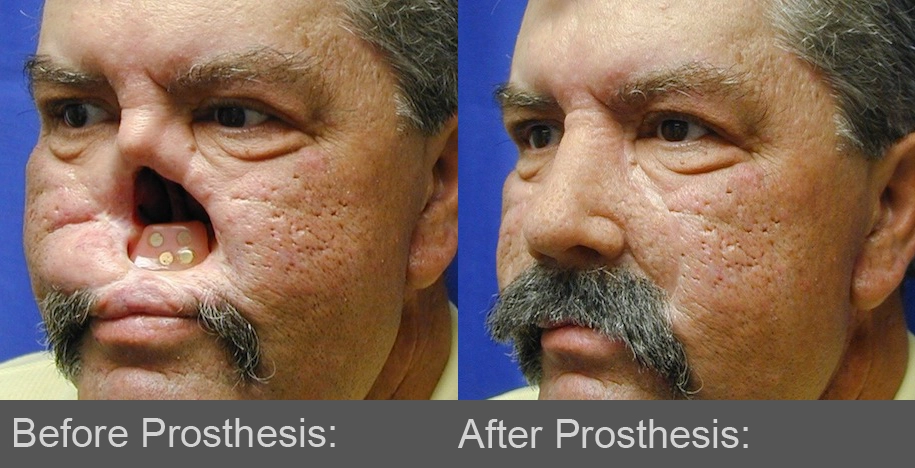The Unexpected Beauty of Facial Prostheses: Redefining Art and Aesthetics
We often associate “art” with traditional mediums like painting and sculpture. However, the boundaries of aesthetic appreciation are far more fluid than we might initially assume. This blog post explores the compelling case of facial prostheses, arguing that these life-changing medical devices deserve recognition as genuine works of art.
Beyond Functionality: The Artistic Merit of Prosthetic Creation
Precision and Craftsmanship: A Masterpiece in Miniature
Facial prostheses, created following head and neck cancer surgery or other significant facial trauma, are far from mass-produced. Each one is a unique creation, meticulously tailored to the individual patient. The process begins with a detailed molding and sculpting process, replicating the patient’s natural anatomy with astonishing accuracy. Subsequent meticulous coloring and painting ensures a seamless, almost invisible integration with the patient’s remaining facial features. This level of precision and artistry is undeniable, showcasing a mastery of both medical science and artistic skill.
More Than Just a Replacement: Restoring Identity and Dignity
The impact of a facial prosthesis extends far beyond the purely physical. For patients who have undergone disfiguring surgery, these prostheses are not merely replacements; they are instruments of restoration. They rebuild not just facial features, but also a sense of normalcy, allowing individuals to re-engage with daily life without the psychological burden of unwanted attention or societal judgment. This inherent ability to restore dignity and self-esteem imbues these creations with a profound emotional and moral resonance.
A Philosophical Examination: Gaut’s Criteria and the Aesthetic Value of Prostheses
Philosopher Berys Gaut offers a framework for evaluating aesthetic objects through five key criteria. Let’s examine how facial prostheses measure up:
1. Moral Beauty: A Compassionate Act of Creation
Traditional artworks often aim to evoke admiration or emotional response. However, the primary purpose of a facial prosthesis is to prevent a negative response. The creator’s goal isn’t to impress, but to provide dignity and comfort to the patient, mitigating the social stigma associated with disfigurement. The very invisibility of a successfully crafted prosthesis – far from being a failure – demonstrates a profound commitment to compassion and empathy, a moral beauty that elevates its aesthetic value.
2. Imparting Knowledge: A Window into Human Anatomy and Resilience

The creation of a facial prosthesis provides a valuable educational opportunity. By learning about the process – from the intricate details of facial anatomy to the technical mastery required – viewers gain a deeper understanding of human resilience and the complex interplay of art and science in overcoming adversity. The dedication and skill of the prosthetist, a combination of medical expertise and artistic sensitivity, becomes evident.
3. Technical Excellence and Innovation: A Fusion of Art and Technology
The creation of a facial prosthesis showcases the remarkable advancements in materials science, digital imaging, and coloring techniques. These innovations are not merely functional improvements; they significantly enhance the aesthetic outcome, pushing the boundaries of what’s possible in restorative art.
4. Morally Appropriate and Aesthetically Pleasing Response: Fostering Inclusion
The intended response to a well-crafted facial prosthesis is both morally appropriate and aesthetically positive. It restores symmetry and natural appearance, enhancing self-esteem and reducing social isolation. Instead of attracting attention to itself, it helps the individual blend in seamlessly, promoting inclusion and challenging societal perceptions of beauty and normalcy.
5. Inspiring Ethical Action: Challenging Preconceptions and Fostering Empathy
When others become aware of a patient’s prosthesis, it can spark empathy and challenge preconceived notions about beauty, health, and disability. These objects subtly but powerfully encourage a more compassionate and accepting society, breaking down unconscious biases and fostering respect for individual dignity.
Conclusion: Redefining the Boundaries of Art
While not traditionally considered “art” in the conventional sense, facial prostheses fulfill, and in some ways surpass, many criteria for aesthetic evaluation. They represent a powerful intersection of art, science, compassion, and human dignity. Their transformative power, both physical and social, makes them true aesthetic achievements, reminding us that beauty often lies in the love, purpose, and care infused into the creation process.




